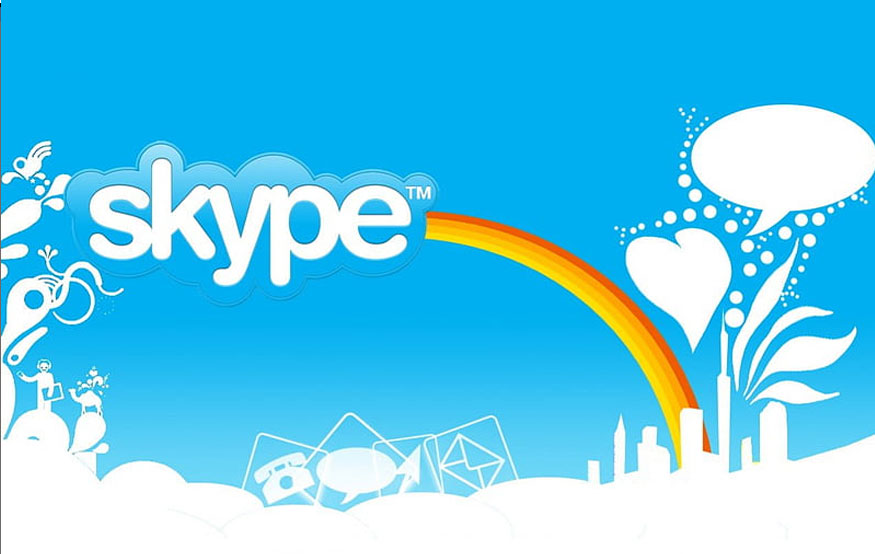358.36K reviews
262.51K followers
- 62.27K users like this
- Unclaimed
Skype offers features like HD video calls, instant messaging, screen sharing, and voicemail. Its benefits include flexible communication, global reach, and integration with other Microsoft services, enhancing productivity.
LICENSE MODEL
Paid
PRODUCT MODEL
Proprietary
PLATFORMS
- Mac
- Windows
- Linux
- Online
- Android
- iOS
- iPhone
- iPad
- Android Tablet
- Google Chrome
- BSD
- Windows Phone
- Android Wear
- PortableApps.com
Skype CATEGORIES ON SEOTESTINGTOOLS.COM
Group Chat App Encrypted Chat App Instant Messenger Video Calling
What is Skype?
Table of Contents
Skype for Business: Empowering Enterprise Communication
In today’s fast-paced business environment, effective communication is the lifeblood of any successful enterprise. As a tech-savvy business consultant with years of experience implementing various software systems across diverse industries, I’ve witnessed firsthand the transformative power of robust communication tools. Among these, Skype for Business stands out as a versatile and powerful solution that has revolutionized how companies connect, collaborate, and conduct their operations.
View More ❱Evolution of Skype in the Corporate World
From Consumer Chat to Enterprise Powerhouse
Skype’s journey from a consumer-focused chat application to a full-fledged enterprise communication platform is nothing short of remarkable. When…Skype for Business: Empowering Enterprise Communication
In today’s fast-paced business environment, effective communication is the lifeblood of any successful enterprise. As a tech-savvy business consultant with years of experience implementing various software systems across diverse industries, I’ve witnessed firsthand the transformative power of robust communication tools. Among these, Skype for Business stands out as a versatile and powerful solution that has revolutionized how companies connect, collaborate, and conduct their operations.
Evolution of Skype in the Corporate World
From Consumer Chat to Enterprise Powerhouse
Skype’s journey from a consumer-focused chat application to a full-fledged enterprise communication platform is nothing short of remarkable. When it first launched in 2003, Skype quickly became synonymous with free internet calls and instant messaging. However, its potential for business use was evident from the start. As businesses began to recognize the value of unified communications, Microsoft saw an opportunity to leverage Skype’s popularity and technology for the corporate world. This vision led to the acquisition of Skype in 2011 and its subsequent integration with Microsoft’s existing enterprise communication tools.Key Milestones in Skype’s Business Journey
The transformation of Skype into a business-oriented platform involved several crucial milestones:- 2011: Microsoft acquires Skype for $8.5 billion
- 2014: Launch of Skype for Business, replacing Microsoft Lync
- 2015: Integration with Office 365 suite
- 2017: Introduction of Skype for Business Server for on-premises deployment
Core Features of Skype for Business
Unified Communications Platform
At its core, Skype for Business serves as a unified communications platform, bringing together various modes of interaction under one roof. This integration is a game-changer for businesses looking to streamline their communication processes. Key features include:- Instant messaging and presence
- Voice and video calling
- Online meetings and webinars
- Screen sharing and file transfer
Advanced Collaboration Tools
Collaboration is the cornerstone of modern business operations, and Skype for Business excels in this area. The platform offers a rich set of tools designed to facilitate teamwork, regardless of geographical boundaries. Some standout collaboration features include:- Real-time co-authoring of documents
- Virtual whiteboards for brainstorming sessions
- Polls and Q&A functionality for interactive meetings
- Recording and playback of meetings for future reference
Enterprise-Grade Security and Compliance
In an era where data breaches and privacy concerns are paramount, Skype for Business stands out for its robust security features and compliance capabilities. As someone who has implemented communication systems in highly regulated industries, I can attest to the importance of these features. Skype for Business offers:- End-to-end encryption for all communications
- Multi-factor authentication
- Compliance with industry standards (e.g., HIPAA, SOC 2)
- Detailed audit trails and reporting
Integrating Skype for Business with Existing Systems
Seamless Office 365 Integration
One of the most compelling aspects of Skype for Business is its deep integration with the Microsoft Office 365 suite. This synergy creates a seamless workflow that can significantly boost productivity. For instance:- Schedule Skype meetings directly from Outlook
- Access presence information within Office applications
- Launch instant messaging or calls from Word, Excel, or PowerPoint
Third-Party App Ecosystem
While the Office 365 integration is impressive, Skype for Business doesn’t limit itself to the Microsoft ecosystem. The platform boasts a rich third-party app ecosystem that extends its functionality even further. Some notable integrations include:- CRM systems like Salesforce
- Project management tools such as Trello or Asana
- Customer support platforms like Zendesk
Comparing Skype for Business to Competitors
Skype vs. Slack
When it comes to team communication, Slack has emerged as a formidable competitor to Skype for Business. While both platforms offer instant messaging and file sharing, they cater to slightly different use cases. Skype for Business excels in: – Video conferencing capabilities – Integration with Office 365 – Enterprise-grade security features Slack, on the other hand, shines in: – Channel-based communication – Extensive third-party integrations – User-friendly interface Ultimately, the choice between the two often comes down to an organization’s existing infrastructure and specific communication needs.Skype vs. Zoom
In the realm of video conferencing, Zoom has gained significant traction, especially in the wake of the global shift to remote work. Both Skype for Business and Zoom offer robust video calling features, but there are some key differences: Skype for Business advantages: – Deeper integration with Microsoft ecosystem – More comprehensive unified communications features – Better suited for large enterprise deployments Zoom advantages: – Simpler user interface – Superior performance on low-bandwidth connections – More flexible pricing options for small businesses The decision between these two often hinges on factors such as existing IT infrastructure, scale of deployment, and specific video conferencing requirements.Implementation Strategies for Enterprise Success
Assessing Organizational Needs
Before diving into a Skype for Business implementation, it’s crucial to conduct a thorough assessment of your organization’s communication needs. This involves:- Analyzing current communication patterns and pain points
- Identifying key stakeholders and their requirements
- Evaluating existing IT infrastructure and compatibility
- Determining scalability needs for future growth
Training and Adoption Best Practices
Even the most powerful communication tool is only as effective as its users’ ability to leverage it. To maximize the impact of Skype for Business, consider the following best practices:- Develop a comprehensive training program for all employees
- Create champions within each department to drive adoption
- Provide ongoing support and resources for troubleshooting
- Regularly gather feedback and iterate on implementation
The Future of Skype in Enterprise Communication
Microsoft Teams and the Evolution of Skype
As we look to the future, it’s impossible to ignore the impact of Microsoft Teams on the enterprise communication landscape. While Skype for Business remains a powerful tool, Microsoft is gradually shifting its focus towards Teams as the primary communication platform for businesses. This transition presents both challenges and opportunities:- Challenge: Organizations need to plan for potential migration to Teams
- Opportunity: Teams offers even deeper integration with Office 365 and more advanced collaboration features
Emerging Trends in Business Communication
The world of enterprise communication is constantly evolving, and several trends are shaping its future:- AI-powered assistants for scheduling and note-taking
- Virtual and augmented reality for immersive remote collaboration
- Advanced analytics for measuring communication effectiveness
- Enhanced mobile experiences for on-the-go productivity
Conclusion
Skype for Business has undoubtedly transformed the landscape of enterprise communication. Its journey from a consumer chat app to a comprehensive unified communications platform is a testament to its adaptability and Microsoft’s vision. While the future may see a transition towards Microsoft Teams, the core principles of seamless communication and collaboration that Skype for Business embodies will continue to shape how businesses interact in the digital age. As organizations navigate the ever-changing waters of enterprise communication, tools like Skype for Business serve as a North Star, guiding them towards more efficient, secure, and productive ways of working. Whether you’re a small startup or a multinational corporation, the principles of unified communication that Skype for Business represents are invaluable in today’s interconnected business world.FAQs
- Is Skype for Business being phased out? While Microsoft is shifting focus to Teams, Skype for Business is still supported and used by many organizations. However, it’s wise to plan for a potential migration to Teams in the future.
- Can Skype for Business integrate with non-Microsoft tools? Yes, Skype for Business offers integrations with various third-party applications, including CRM systems, project management tools, and customer support platforms.
- How does Skype for Business ensure data privacy? Skype for Business employs end-to-end encryption, multi-factor authentication, and complies with various industry standards to ensure data privacy and security.
- What’s the difference between consumer Skype and Skype for Business? Skype for Business offers additional features tailored for enterprise use, including advanced security, integration with Office 365, and more robust meeting capabilities.
- Can Skype for Business handle large-scale webinars? Yes, Skype for Business supports webinars and broadcasts for up to 10,000 attendees, making it suitable for large-scale corporate events and presentations.
Skype offers features like HD video calls, instant messaging, screen sharing, and voicemail. Its benefits include flexible communication, global reach, and integration with other Microsoft services, enhancing productivity.
Product Description
What are the features of Skype?
Communication Features:
- Voice Calls
- Video Calls
- Group Calls
- Instant Messaging
- File Sharing
- Screen Sharing
- Group Chats
- Chat History
- Integration with Office 365
- Reaction and Emoji Support
- Available on Windows, Mac, iOS, and Android
- Web Version Access
- Skype ID and Contacts Management
- Call Recording
- Voicemail Feature
- Accessibility Features
- End-to-End Encryption
- Two-Factor Authentication
- Privacy Settings
User Sentiment
- Skype is a well-known communication platform that allows users to make video calls, voice calls, and send instant messages globally.
- Users appreciate Skype’s high-quality video and audio, ease of use, and ability to connect with multiple contacts simultaneously in group calls.
- Many reviewers highlight the integration with other Microsoft services and the seamless experience it provides for both personal and professional communication.
- While there are occasional reports of connectivity issues and interface changes, overall user sentiment around Skype’s core functionalities remains positive.
Official Links
Skype information
- Developed By: Skype Technologies S.A.
- Email Support: [email protected]
- Year Founded: 2003
- HQ Location: Tallinn, Estonia
- Supported Languages: Arabic, Chinese (Simplified), Chinese (Traditional), Czech, Danish, Dutch, English, Estonian, Finnish, French, German, Greek, Hungarian, Indonesian, Italian, Japanese, Korean, Latvian, Lithuanian, Malay, Norwegian, Polish, Portuguese, Romanian, Russian, S
Skype status
Is Skype down? NO
Current Skype status: Up
NOTE: There are 0 reported issues in the last 24h.
Last check: 1 second ago





